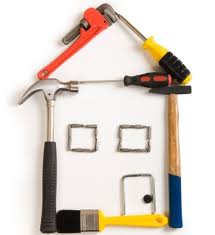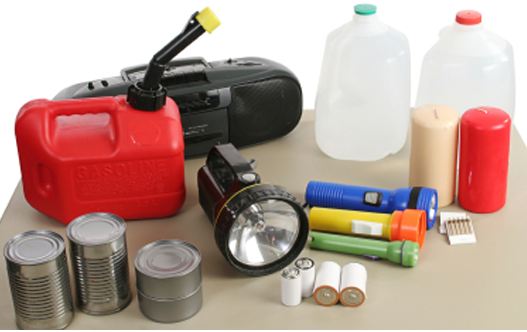12 months ago
·
by
Erin Carlson ·
0 comments
 Millions of Americans take to the water each year during boating season, traveling the coastlines, rivers, lakes and canals. The watercraft range from simple rowboats to jet skis to small motorboats to luxury yachts. Boat owners spend significant amounts of money buying and maintaining their boats.
Millions of Americans take to the water each year during boating season, traveling the coastlines, rivers, lakes and canals. The watercraft range from simple rowboats to jet skis to small motorboats to luxury yachts. Boat owners spend significant amounts of money buying and maintaining their boats.
The need for insurance protection when the boat is on the water is obvious, but many boat owners question the need for it during the off-season. However, insurance is just as important when the boat is in storage as when the owner is using it.
A typical Boat insurance policy provides a package of coverages, including:
- Damage to the boat, motor, and trailer
- Damage to portable property used in the maintenance and operation of the boat, including things like anchors, life jackets, oars, tools, skis and surfboards, lights, and fire extinguishers
- Damage to other types of property, including sports equipment, clothing, and other personal effects
- Damage to equipment on shore, such as boat covers
- The cost of recovering a sunk or stranded boat
- The cost of emergency service and towing
- Damage to non-owned or substitute boats
- Loss of fishing tackle
- Liability coverage for injuries or damages for which the boat owner is legally responsible
- Coverage for injuries the boat owner or others on the boat suffer in an accident with an uninsured watercraft
A boat owner will need these coverages if their boat gets into a collision with another boat, or if thieves steal scuba gear from it, or if fire damages the motor. However, losses are still possible while the boat is out of the water. Progressive Insurance reports that nearly two out of every 10 boat claims it receives from northern states occur between Labor Day and Memorial Day, when most owners are not using their boats much.
Some examples of losses that could occur:
- The building which houses the boat during the winter burns to the ground.
- Vandals damage the boat in the middle of the night while it’s in the owner’s driveway.
- A neighbor’s child, playing in the owner’s yard, runs into the boat stored there and injures his head.
- Someone steals the boat and its trailer from the yard at a repair shop.
- While the boat is stored in the yard, heavy snow melt causes a flash flood that damages the boat’s interior, including the mechanical system and the radio.
Some insurance companies offer “disappearing deductibles,” where the deductibles for collision and damage losses from other causes decrease by a certain amount for every claim-free year. Those companies will grant this benefit only to boat owners who keep their insurance continuously in force with them.
One of our insurance agents can provide advice on the types and amounts of coverage a boat owner needs. We can also recommend insurance companies that have expertise in boating, good claims-paying practices, and reasonable prices. Insuring a boat all year round can be expensive, but compared to the cost of a large uninsured loss, it may well be worth the cost.
Read more
 This was a very wet winter for us. But spring is here and the flower super blooms are amazing. It’s a season of new beginnings, where flowers bloom, trees grow new leaves and the weather gets warmer. While this may be a time to celebrate and enjoy the beauty of nature, it’s important to remember that springtime can also bring potential risks and hazards that could result in property damage or personal injury. As such, it is essential to have insurance protection in place to mitigate any potential losses.
This was a very wet winter for us. But spring is here and the flower super blooms are amazing. It’s a season of new beginnings, where flowers bloom, trees grow new leaves and the weather gets warmer. While this may be a time to celebrate and enjoy the beauty of nature, it’s important to remember that springtime can also bring potential risks and hazards that could result in property damage or personal injury. As such, it is essential to have insurance protection in place to mitigate any potential losses.
Home insurance is one of the most important types of protection to consider during springtime. Heavy rainfall and strong winds are common during the spring season, and these can cause significant damage to your home. For instance, heavy rainfall could cause flooding or water damage to your home’s foundation, walls, or electrical systems. This could be costly to repair and could result in significant loss if not covered by insurance. Therefore, it is advisable to ensure that you have adequate insurance coverage for such eventualities.
Additionally, springtime can be a prime time for home improvement and renovation projects. From repairing leaky roofs to repainting walls, homeowners are often eager to spruce up their homes after a long winter. However, any construction or renovation work can potentially cause property damage, and it’s essential to have the right insurance coverage in place to protect against these risks. If you are planning on carrying out any renovations or remodeling work during springtime, it’s important to inform your insurance provider beforehand to ensure that you have adequate coverage for any potential damages.
Springtime is also a season of increased outdoor activities, such as gardening, barbecues, and sports. While these activities can be fun and exciting, they can also lead to personal injury or property damage. For instance, a gardening tool could accidentally cause injury to a neighbor, or a sports ball could break a window. In such cases, having liability insurance coverage can protect you from any legal or financial liability that may arise.
Similarly, springtime is also a time when many people start planning their vacations and road trips. Before embarking on any travel, it’s important to review your insurance policies and ensure that you have adequate coverage. This may include travel insurance, which can protect against any trip cancellations, medical emergencies, or lost luggage.
Springtime is a season of change and new beginnings, but it can also bring potential risks and hazards that could result in property damage or personal injury. As such, it’s important to have insurance protection in place to mitigate any potential losses. Home insurance, liability insurance, and travel insurance are just a few types of protection that should be considered during this time of year. By taking the necessary precautions and having the right insurance coverage in place, you can enjoy the beauty of springtime with peace of mind. Get in touch with us, your Scurich team is happy to help answer any questions.
Read more

Home invasions and vandalism is on the rise. As many as one in five homes are invaded annually in the United States. One tool thieves use is lock bumping. They use a bump or rapping key to unlock pin tumbler locks and gain access to your home. Learn about lock bumping as you take steps to secure your home and peace of mind.
How Lock Bumping Works
Typically, you can only open a door with a key that’s specific to that lock. The key’s design aligns with the lock, pushes the pins into place above the shear line and unlocks the door. A bump key is designed to also unlock a door except the thief inserts it into the keyhole and taps the key with a screwdriver or hammer. The bumping pushes the pins in the lock above the shear line and pops the lock.
Thieves can easily learn how to make a bump key thanks to numerous online how-to videos and instructions. With a collection of 10 different bump keys, they can open 90 percent of the doors in the U.S., and the entire process takes a few seconds. Tips That Protect Your Home From Lock Bumping
Protect your home and prevent lock bumping with several steps.
- Buy a different pin tumbler lock. Certain locks are harder to bump. When shopping for new locks, look for ones that are:
- Made with security pins
- Not made from hardened steel
- Designed with programmable side bars and not top pins
- Equipped with a trap pin
- Shallow drilled where one of the interior pins is slightly shallower than the others
- Change the spring tension. Stronger top springs in the lock make bumping harder, so ask a locksmith to make at least two of the top springs firmer.
- Replace the traditional pin tumbler lock. Instead, invest in a disk tumbler, time, combination, electronic or electromagnetic lock. They don’t contain pins and are less vulnerable to bumping.
- Reinforce existing locks. If you don’t want to replace all the locks in your home, replace the door’s metal strike plates. It mounts on the doorjamb and costs about $10.
- Lock your door always. Whether you’re hanging out at home, working in the yard or garage, going to work or taking an extended vacation, lock your doors. Don’t make it easy for a thief to enter your home!
Purchase adequate insurance. Homeowners and renters insurance won’t prevent lock bumping, but it can give you peace of mind. With the right insurance, you can replace any of your possessions that are lost, stolen or vandalized.
Your home’s security and peace of mind are vital. Understand and prevent lock bumping as you protect your home and family.
Read more

With the arrival of spring, you might be itching to start home improvement projects. Certain projects can reduce your home insurance costs, so consider focusing on those as you save money and improve your home.
Replace Washer Hoses
An inexpensive no-burst stainless steel hose from your local hardware store can reduce your home insurance premium by 10 percent. Attach it to your washing machine and reduce one of the most common causes of water damage.
Install a Sturdy Garage Door
Because strong seasonal winds and other stormy weather can destroy your garage door and everything in this structure, install a sturdy garage door. One that’s hurricane-resistant or fitted with horizontal and vertical braces can save you 10 percent on your insurance premium and potentially pay for itself within five years.
Hang Storm Shutters
Wind-resistant shutters could reduce your insurance costs by as much as 20 percent, and they’re particularly important if you live in a hurricane zone. Both metal and roll-down shutters protect your home.
Purchase Trouble Detectors
Smoke and carbon monoxide detectors are two investments that reduce your home insurance premiums, but consider other trouble detectors, too. They provide plumbing failure warnings, detect furnace failure or alert you to frozen water pipes. Find leak detectors and other trouble detectors online or at your local hardware store.
Invest in Fire Extinguishers
For a savings of five percent, invest in fire extinguishers. Place one in the kitchen and on every floor or your home.
Invest in Carbon Monoxide Detectors
Place one in the kitchen and on every floor or your home.
Choose Fire-Resistant Siding
Save 20 percent on your insurance premium and give your home a new exterior appearance when you install fire-resistant siding. Metal, clapboard, fiber-cement and clapboards are all Class A fire-resistant materials that are available in a variety of colors and finish styles that meet your needs.
Inspect and Repair or Replace Your Roof
Because worn shingles on your current roof won’t do much to protect your home when windy weather arrive, consider replacing your roof. Select sturdy roofing materials like metal, shake or Class 4 modified asphalt shingles. Use six instead of four staples or nails per shingle for additional savings.
These spring home improvement projects can decrease your premium. You’ll also save money when you drop additional structure coverage, increase your deductible, make automatic payments and combine home and auto policies. Discuss the details with your insurance agent as you save money and protect yourself this season and throughout the year.
Read more
 Heavy rains, floods, hurricanes can all threaten your home and family this spring. While no amount of preparation prevents volatile spring weather, a home emergency kit helps you prepare to be safe and survive.
Heavy rains, floods, hurricanes can all threaten your home and family this spring. While no amount of preparation prevents volatile spring weather, a home emergency kit helps you prepare to be safe and survive.
Survival Essentials
A warm blanket, spare set of clothes and matches could make the difference in your survival. Pack these and all other essential supplies you might need in an airtight container that’s easily accessible.
Food and Water
The Red Cross suggests families store two weeks’ worth of food and water, which means you’ll need one gallon of water per person per day and a variety of easily prepared, non-perishable foods. Don’t forget to stock baby and pet food if necessary, too.
First Aid
Minor bumps and bruises can occur as your family rushes to safety. Your first aid kit should include basic first aid supplies like bandages, antibacterial cream, burn cream and pain reliever. Pack prescription medications, hearing aid batteries and other specialized medications if needed.
Hygiene Items
Toilet paper, toothbrushes and diapers are essential. Hand sanitizer and bleach should also be included in your emergency kit.
Stay Connected
You’ll want to stay connected to the outside world and signal for help, so include a battery-powered radio, extra batteries, your cell phone and chargers in your emergency kit. A flashlight and whistle for each person is also a good idea.
Tools
Whether you have to dig out of the basement or open a soup can, tools come in handy. Stock a multipurpose tool, work gloves, scissors, shovel, screwdriver set, hammer and manual can opener in your kit.
Important Papers
In the rush of an evacuation, you may forget to grab your purse or wallet. Copy important papers like your driver’s license, birth certificate, insurance policies and medical information. Store them, extra cash and your family’s emergency contact information in a waterproof bag to keep them safe.
This home emergency kit will play a big role in keeping you safe when volatile spring weather strikes. Update your insurance policies, too, as you stay protected and prepared.
Read more
 Whether you live near a body of water or not, flood insurance might be a good investment. It’s usually not included in your regular homeowners or renters insurance policy, though. Consider five factors as you decide if you need this type of insurance coverage.
Whether you live near a body of water or not, flood insurance might be a good investment. It’s usually not included in your regular homeowners or renters insurance policy, though. Consider five factors as you decide if you need this type of insurance coverage.
- Do you live in an area with a high flood risk? If so, you definitely want flood insurance coverage. That’s because your home, located near a river, stream, lake or flash-flood zone, faces a high threat of flooding. Protect your home and its contents when you buy a flood insurance policy.
- Do you live in a low flood risk zone? Consider that the local sewer system or nearby storm drain could overflow and cause extensive damage. Because a flood insurance policy typically costs less for customers who live in low-risk areas, purchasing a policy makes sense even if you don’t live near a major body of water or in a flood zone.
- Do you rent your home? Most landlord insurance policies cover the buildings only. They do not insure your home’s contents. Consider flood insurance that replaces any possessions that are damaged by flooding.
- Do you have a mortgage? Check with your lender about flood insurance requirements. If you live in a flood zone, you will probably need to carry this coverage and prove that you’ve purchased a policy before you can sign the loan documents.
- Do you own any possessions? In just a few inches of water, your appliances, furniture and other belongings can be damaged beyond repair. So, if you own any possessions, consider flood insurance that provides financial reimbursement and allows you to replace items that are damaged by excessive water.
Before discounting flood insurance, talk to your insurance agent. He or she will answer your questions and help you decide if coverage is a wise investment for you. In many cases, the coverage is invaluable.
Read more
 Millions of Americans take to the water each year during boating season, traveling the coastlines, rivers, lakes and canals. The watercraft range from simple rowboats to jet skis to small motorboats to luxury yachts. Boat owners spend significant amounts of money buying and maintaining their boats.
Millions of Americans take to the water each year during boating season, traveling the coastlines, rivers, lakes and canals. The watercraft range from simple rowboats to jet skis to small motorboats to luxury yachts. Boat owners spend significant amounts of money buying and maintaining their boats.
 This was a very wet winter for us. But spring is here and the flower super blooms are amazing. It’s a season of new beginnings, where flowers bloom, trees grow new leaves and the weather gets warmer. While this may be a time to celebrate and enjoy the beauty of nature, it’s important to remember that springtime can also bring potential risks and hazards that could result in property damage or personal injury. As such, it is essential to have insurance protection in place to mitigate any potential losses.
This was a very wet winter for us. But spring is here and the flower super blooms are amazing. It’s a season of new beginnings, where flowers bloom, trees grow new leaves and the weather gets warmer. While this may be a time to celebrate and enjoy the beauty of nature, it’s important to remember that springtime can also bring potential risks and hazards that could result in property damage or personal injury. As such, it is essential to have insurance protection in place to mitigate any potential losses.
 With the arrival of spring, you might be itching to start home improvement projects. Certain projects can reduce your home insurance costs, so consider focusing on those as you save money and improve your home.
With the arrival of spring, you might be itching to start home improvement projects. Certain projects can reduce your home insurance costs, so consider focusing on those as you save money and improve your home. Heavy rains, floods, hurricanes can all threaten your home and family this spring. While no amount of preparation prevents volatile spring weather, a home emergency kit helps you prepare to be safe and survive.
Heavy rains, floods, hurricanes can all threaten your home and family this spring. While no amount of preparation prevents volatile spring weather, a home emergency kit helps you prepare to be safe and survive. Whether you live near a body of water or not, flood insurance might be a good investment. It’s usually not included in your regular homeowners or renters insurance policy, though. Consider five factors as you decide if you need this type of insurance coverage.
Whether you live near a body of water or not, flood insurance might be a good investment. It’s usually not included in your regular homeowners or renters insurance policy, though. Consider five factors as you decide if you need this type of insurance coverage.